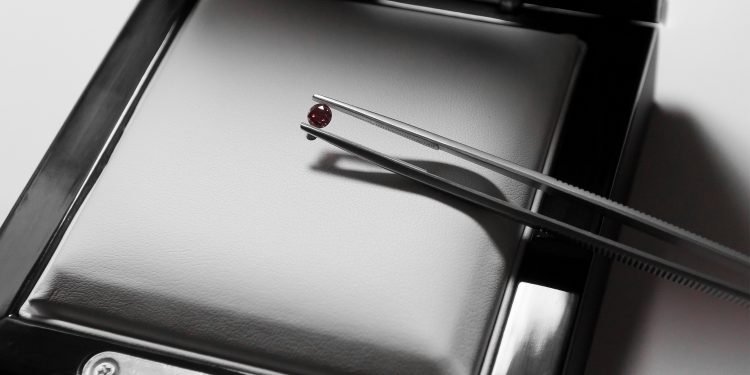The Ever-Growing Global Rareness of Pink Diamonds

With fast-growing demand for ‘fancy coloured diamonds’ we have seen trends moving towards yellow, the most common and even the lesser fancied blue, however for royalty, the rich and famous and anonymous collectors by far the most sought-after diamond around the world is the coveted pink diamond.
It has no equal in the world of jewellery and exotic stones. Sought after for its beauty, rarity and the history and romance it brings. Although up until now they have been slightly more numerous than the blue diamond this balance is about to be reversed and for people in-the-know getting hold of pink diamondswhether through physical ownership or investment has never been more important.
Although pink diamonds are found in Brazil, South Africa, India and Russia the yield is so insignificant per year, just a few stones and rarely sizeable.
The Up-Turn in Global Production
Since 1983 the primary source for the supply of high-quality investment grade pink diamonds has been The Argyle Diamond Mine in Western Australia.
Owned by the mining giant Rio Tinto. The mine was discovered in the late 1970’s and started producing ‘pinks’ as they were nicknamed in Australia in 1983. Since then year-on-year statistically the Argyle Mine has supplied on average 90 per cent of the world’s total production, in some years as much as 95 per cent.
Its record-breaking year was in 1994 when it managed to find over 42 million carats, which is a staggering amount in comparison to any other mine in activity today.
Since the turn of the century, it is fair to say that the operation of the mine itself could be put down to its production of ‘pinks’ as the output of the diamond production from the mine has been down in general. On average, the yearly find is around 5% of Argyle pink diamonds that are actual gem quality and then you can divide that down considerably again to the highest investment grade quality.
Argyle pink diamonds are valued anywhere between $100,000 per carat to well more than $1 million. Statistics compiled within the last decade indicated that the mine production price averaged around $25 per carat, so in effect the mine in some ways helped to create a market that ended up sustaining it.
The diamond industry in India is primarily in existence today due to the Argyle Mine playing a massive role in its development. As the mine was producing vast quantities of low-cost diamonds, in the west these would have been used for industrial material. Rio Tinto decided to create Indian cutting works in tandem with the mine to find and create a market and buyers for these diamonds.
The Pink Diamond Paradigm Shift
However, the reality of the situation is that the Argyle mines days are numbered, and it is reaching the end of its life-span, so the decrease of the output of pink diamonds is going to hit hard.
The open pit part of the mine has been exhausted and Rio Tinto moved operations underground but as of 2013 they announced that all operations would cease in 2021, which leaves us only three years before 90-95 per cent of the world’s yearly supply all but disappears from the market, with no feasible replacement supply known of.
To give you as much clarity as the buyers require of the diamonds themselves here are some interesting facts to consider as to where the industry as a whole is headed.
The largest and best Argyle pink diamonds are sold through a tender which is exclusive and cut and polished by the company.
- The yearly offering averages around 50-60 diamonds.
- The average annual production is around 130 million carats with less than 20,000 being of rough pink diamonds.
- The pinks are representing less than 0.015% of total global production.
- Consider the impact that a 90% decrease in that statistic will have on the price of these diamonds.
Many coloured diamonds attain their colour through chemical impurities but pinks are different. Scientists believe Pink diamonds attain their colouration from distortion in the lattice of the stone, theorized that it happens during the growth process not at the inception.
One of the reasons the stones hold their value is the fact that scientists even today are not 100 per cent sure how this phenomenon happens with pinks.
Larger pink diamond stones are even rarer and still only in single figures worldwide. The Unique Pink was sold at Sotheby’s in Geneva for an outlandish $31.6 million. Leaving it with the auspicious tag of being the most expensive vivid pink diamond to be sold at auction. The stone itself was 15.38 carat per shape. Since listing on the stock market 13 years ago pink diamond investment has seen a steady increase and more people are looking to them for stability in their portfolios.
Pink Diamonds get Celebrity Status
For people who have worked in, collected, owned, cut, sold and polished pink diamonds, their value holds no surprises along with their rarity. But the industry certainly got some helpful mainstream notoriety through two celebrity purchases.
Firstly Ben Affleck’s $1.2 million romantic gesture caught the headlines with Jennifer Lopez back in 2002. The 6.1-carat pink diamond engagement ring made major headlines around the world, and even though they say diamonds are a girl’s best friend, Jennifer Lopez decided to give her best friend back to Ben Affleck when they split up.
Almost a decade on the celebrity world was once again buzzing with news of Enrique Iglesias’s engagement gift to Anna Kournikova of an 11-carat pink diamond ring worth a staggering $2.5. As of today, it is still Anna Kournikova’s best friend.
However, over the centuries far more prominent people have been mesmerized by the allure of the rare pink diamond. Queen Elizabeth II has one of the vastest collections of anyone on earth and is particularly fond of them.
The largest pink diamond in the world is known to us in translation as the ‘Sea of Light’ its original name the Darya-I-Noor. The stone is an estimated 182-carats with a subtle pale shade of pink and antique table cut.
It is part of Iran’s crown jewels, mined in the Paritala-Kollur mine in India and there are scriptures and journals regarding the find dating back as far as 1642.
Some historians argue that this is not the whole stone but in fact, the Noor-Ul-Ain diamond is the smaller 60-carat cut from the larger stone.
The theory dated from 1739 when Persia invaded Northern India. In return for handing back the crown of India to the emperor, Nader Shah took the entire treasury of the Mughal Empire of which contained the Darya-I-Noor.
Conclusion
Stories of Pink diamonds and the importance of their finds go back centuries, and we have a documented history of where they came from but where the industry is headed is far from clear. One thing though is for sure the value of these rare and beautiful stones from the core of the earth is about to rise as high as they have had to to be on someone’s finger. To get involved in investment in pink diamonds post 2022 will be a very expensive hobby indeed. Get ready for the rise of the pink diamond and for them to be the most valuable stones in existence.
ABOUT AUTHOR
Koby Linger is a blogger and content marketer currently connected with Lady Lux Diamonds, exclusive jewellery experts specialising in pink diamond investment. His hobbies include water sports and travel wherever it may be.






